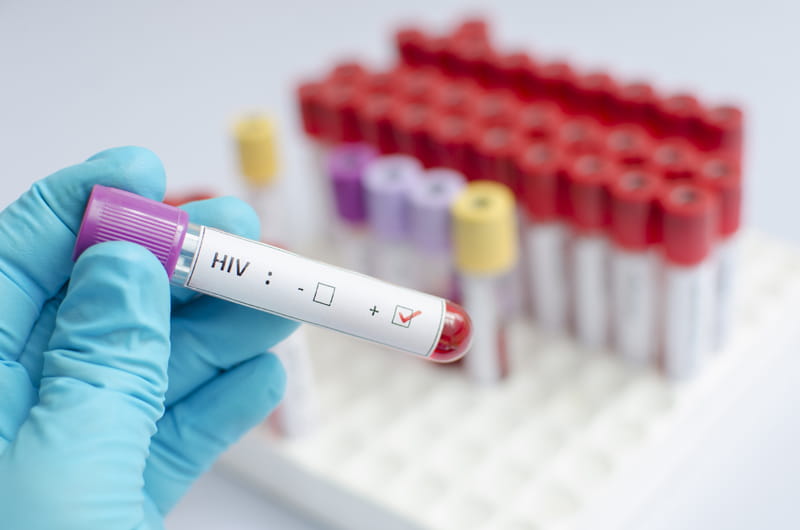Risk-Taking Behaviors Tied to Racial Disparities in HIV in Gay Communities
 By Frank Otto
By Frank Otto

- Drexel Environmental Collaboratory Releases Cross-Sector Findings on Severe Weather Recovery Challenges
- Drexel Launches the Manuel Stamatakis Center for Alternative Investments at the LeBow College of Business
- How and When Could AI Be Used in Emergency Medicine?
- Faculty Highlights: Recent Awards and Grants

On the surface, data indicate that gay black men are 4.5 times as likely to have HIV, while white gay men are 16 times as likely than heterosexual men of their same race.
But work by Drexel University researchers showed that those numbers aren’t actually a true representation of HIV risk. In fact, the disparity between gay black and white men was actually demonstrated to be smaller, with a key factor being underlying differences in how risk is assessed.
Work by a team of researchers from the Dornsife School of Public Health showed that there is a reduction in the disparity of HIV risk between white and black men who have sex with men (termed “MSM” in the study) once potentially stigmatizing behaviors that are generally underreported or mismeasured in surveys, such as sharing needles or having anal sex with another man, were accounted for. Factoring all of that in helped Neal D. Goldstein, PhD, a research assistant professor at Drexel, and his team to more accurately ascertain the baseline levels of risk for each group.
“The racial disparity in HIV among MSM, is well known: Black MSM are more likely to be HIV-positive than white MSM,” explained Goldstein, the lead author on the study, which was published in Epidemiology. “But it is not due to some biological difference, as race is a social — not biological — construct. Therefore, we expect the difference to come from non-biologic factors, including risk-taking behaviors.”
Studying data from a national survey that included numbers for both white and black men, the researchers found that when they more accurately assessed sexuality and adjusted for baseline levels of risk in a comparison group of non-MSM, the racial gaps in HIV prevalence in MSM narrowed considerably.
Pre-study numbers indicated that black MSM were 4.5 times as likely to have HIV than their non-MSM counterparts, while white MSM were said to be 16 times more likely to HIV than non-MSM white men. That’s a gap of 11.5.
However, when the Drexel study took underreporting of same-sex behavior and behavioral risk factors into account, the difference narrowed to 6.2, with black and white MSM’s HIV prevalence odds ratios standing at 5.8 and 12, respectively. Although the numbers for black MSM seemed to increase, the belief is that the number is actually a truer representation of the odds since more factors were taken into account.
White MSM having such higher odds seems counterintuitive, since the studies the Drexel team reviewed have historically suggested that black MSM are more likely to have HIV. But one explanation for this is that when comparing black MSM to black non-MSM, higher levels of black non-MSM are HIV positive (white non-MSM account for 5 percent of new HIV infections each year, while black non-MSM stand at 16 percent), so the difference in prevalence isn’t as great. Attributed to the elevated black non-MSM HIV prevalence numbers was higher likelihood of engaging in risky behavior, according to previous research.
Goldstein and his team — which included Seth L. Welles, PhD, ScD, professor, and Igor Burstyn, PhD, associate professor, as co-authors — believe another key component of the racial disparity in HIV prevalence may be attributable to white MSM being much more likely to engage in risky behavior than white non-MSM, especially amphetamine use.
“Alcohol and drugs like amphetamines or other party drugs alter risk-taking behavior,” Goldstein said. “The use of these differ by race.”
Social factors also play a part in fueling risky behaviors, Goldstein added.
“For example, consequences of racism may affect the size of your pool of potential sexual partners,” he said. “With smaller networks among black MSM, the number of HIV infections can increase quickly. Perhaps this is a contributing reason for the racial disparity we’re observing.”
An Australian study in 2015 found that 84 percent of the gay or bisexual men of color surveyed experienced racism in the LGBTQ community, and a similar survey in the United Kingdom found that 80 percent of gay black men experienced racism. And evidencing a potentially smaller network, where prevalence of HIV could increase quickly — a professor at the University of California, Berkeley found that on OKCupid, a popular dating site, 80 percent of contacts initiated by white members — whose sexual preference was not noted — were with other white members. Only 3 percent of those contacts were with black members.
Unfortunately, attitudes such as racism aren’t as easily measured in a health data review like Goldstein’s. But he feels that his study shows the need for a “mixed-methods approach of gathering qualitative information.”
Ultimately, the researchers hope to drill down to data that can reveal the real drivers of HIV disparity so that more successful approaches can be taken to combat the spread of the disease.
“We call for improved data,” Goldstein said. “HIV prevention and treatment programs rely upon surveillance data. If the data are flawed, the statistics that health departments use may misdirect important funding.”
Those interested in reading the full study, “Bayesian approaches to racial disparities in HIV risk estimation among men who have sex with men,” can access it here.
In This Article
Contact
Drexel News is produced by
University Marketing and Communications.